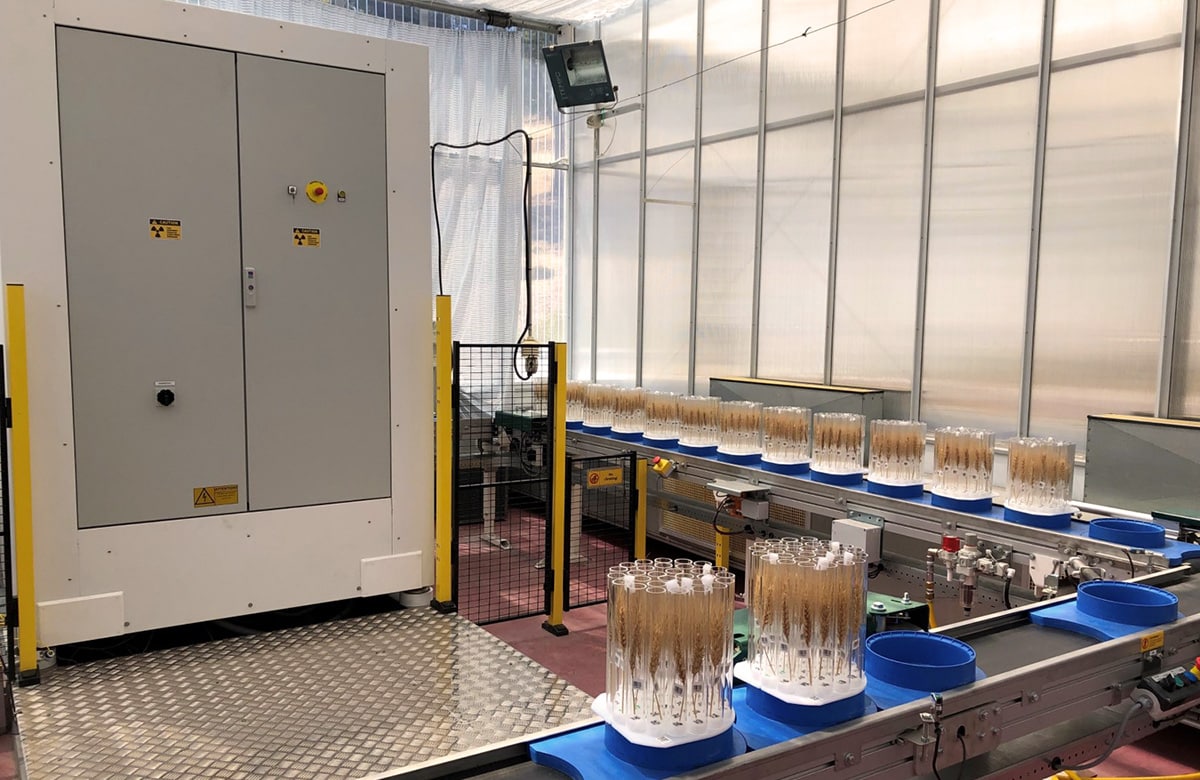Australia
September 7, 2022

X-Ray Computed Tomography (CT) scanners have become essential equipment for human health research and diagnosis in hospitals around the world.
Now, scientists at The Plant Accelerator® (TPA), University of Adelaide node of the Australian Plant Phenomics Facility (APPF), in collaboration with the German Fraunhofer Institute for Integrated Circuits and Dutch company PhenoKey, have successfully adapted the technology for plant research.
The resulting X-ray CT Scanner can provide high quality three-dimensional image data for the structural characteristics of cereal spikes, which is invaluable for assessing drought tolerance, heat stress, frost damage and other relevant traits in crop pre-breeding and breeding programs.
Unlike human health CT scanners, which rotate around their subject, the plant scanning technology brings sample holders and pots to the scanner on a conveyor belt and rotates them between the X-ray source and detector.
This allows X-ray CT phenotyping to be done as an automated, high-throughput process.
The custom-built system delivers high-throughput, non-destructive scanning of grain spikes, for more efficient acquisition and comparison of key traits such as grain number, grain weight, density, volume and physical size and shape.
It has already been used for spikes of wheat, barley, oats and sorghum, and is now being trialled to scan other crop types along with plant root systems in soil.
This capability will help researchers to study the architecture of root systems and how roots respond to different soil types, inputs or environmental stresses, without the need for destructive sampling.
The facility will be important to crop breeding programs as it allows pre-breeders and breeders to assess how new plants respond to different growing environments or inputs such as fertilisers. It means genotypes being developed for specific conditions, such as increased drought tolerance, can be assessed and selected more efficiently.
The X-ray CT scanner is situated right next to The Plant Accelerator’s landmark automated high throughput imaging platforms.
This allows shoots of plants being phenotyped with high precision to be transferred to the adjacent X-ray CT system and then scanned non-destructively to produce a high-resolution 3D model of their root systems before returning to the shoot phenotyping platform.
This new infrastructure has been funded by the Grains Research and Development Corporation (GRDC) with co-investments from the University of Adelaide, the APPF, the University of South Australia, the University of Melbourne, Macquarie University and La Trobe University.